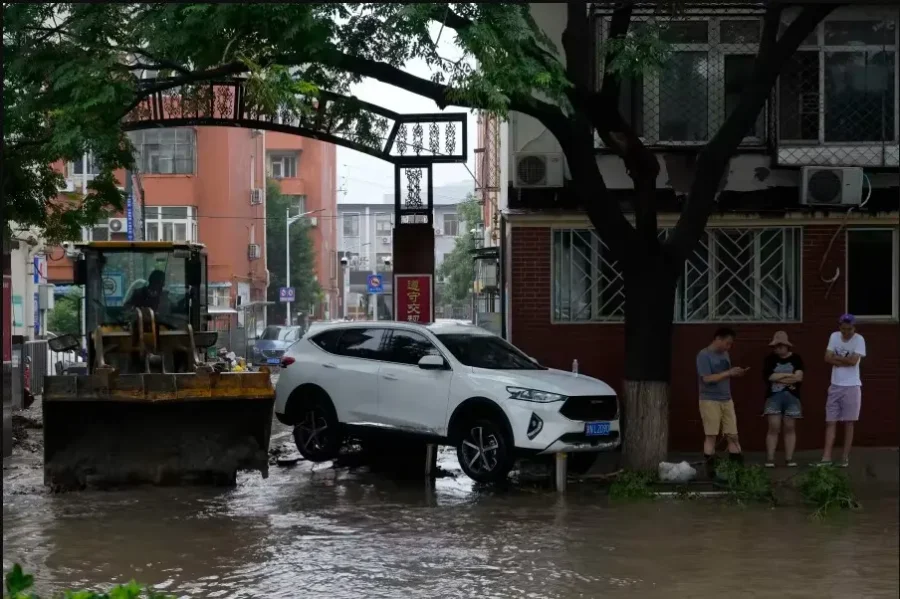Deadly rains that pummelled China’s capital in recent days were the heaviest since records began 140 years ago, Beijing’s weather service said on Wednesday, as a massive cleanup operation be-gan.
Millions of people have been hit by extreme weather events and prolonged heat waves around the globe in recent weeks — events that scientists say are being exacerbated by climate change.
And the Beijing Meteorological Service said the capital has just experienced the “heaviest rainfall in 140 years”, when city authorities started keeping records.
“The maximum (amount) of rainfall recorded during this storm, which was 744.8 millimetres, occurred at the Wangjiayuan Reservoir in Chang-ping,” the service said, adding the largest volume previously recorded was 609 millimetres in 1891.
At least 11 people have died in the rains in Beijing, state broadcaster CCTV said Tuesday, with more than a dozen missing.
The epicentre of flooding shifted to neighbouring Hebei province on Wednesday.
In Beijing’s Fangshan district — on the border between the capital and Hebei — an AFP team saw a park that had been completely flooded, with tons of rubbish that had been washed away by torrential rains stuck near a bridge.
The area had been “extremely dangerous” on Tuesday, a police officer said. Journalists also saw a military vehicle with caterpillar wheels on its way back from the most affected areas.
And in the opposite direction, AFP saw an am-bulance, a rescue boat and a police car heading to Zhuozhou, a hard-hit district of Hebei.
State media footage showed rescuers rowing inflatable rafts through waterlogged neighbourhoods, while locals clung to construction scaffolding awaiting help.
Storm Doksuri, a former super typhoon, swept northwards over China after hitting southern Fujian province last week, following its battering of the Philippines.
Heavy rains began pounding the typically dry capital and surrounding areas on Saturday.
The amount recorded in just 40 hours neared the average rainfall for the entire month of July.
State media warned last week that 130 million people would be affected by the extremely heavy rainfall across northern China.
Swathes of suburban Beijing and the surrounding areas have been inundated, with state media reporting 974,400 people have been evacuated in the capital and neighbouring Hebei province.
And to the west, a further 42,211 people have been evacuated in Shanxi province. Authorities in the capital lifted the red alert for flooding on Wednesday morning “as the water flow in major rivers has gone below the warning mark”, Xinhua reported.
With rainfall easing, the focus has moved to the relief operation, with hundreds of rescue workers from the Chinese Red Cross being sent to hard-hit areas to clean up debris and help evacuate victims, state news agency Xinhua reported.
Two of the 11 people killed in the rains in Beijing died while “on duty during rescue and relief”, according to state broadcaster CCTV.
Thirteen people were still missing, but another 14 have been found safe, the broadcaster said. In neighbouring Hebei province, nine people were killed and six were missing, it said.
Another two casualties were reported in north-eastern Liaoning province over the weekend.
President Xi Jinping on Tuesday called for “every effort” to rescue those “lost or trapped” by the storm. And visiting a relief work site in Beijing’s Mentougou — one of the capital’s hardest-hit areas — Vice-Premier Zhang Guoqing urged “all-out” efforts to rescue those still missing.
“The top priority of the current work is to save people’s lives, race against the time to search for the people missing or trapped and minimise casualties,” Zhang said, according to state news agency Xinhua. The country is now on alert for the arrival of Typhoon Khanun, the sixth such storm of the year, as it nears China’s east coast.—AFP










